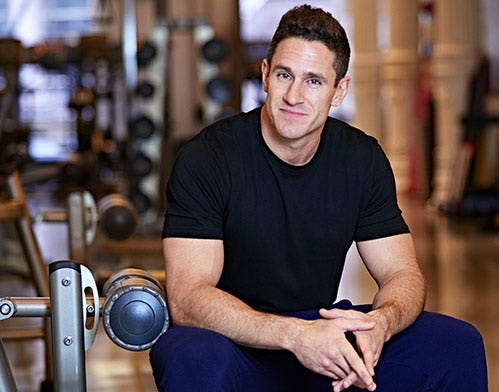How to Create Your Own Workout Plan: A Step-by-Step Guide
- 2/19/24


How do we transform the feeling of “I want to work out more” into action? It starts with a plan. Whether you’re a fitness beginner or a seasoned exerciser, creating a well-rounded workout plan is the key to sustained fitness success.
In this article, we’ll walk you through how to make a workout plan work for your schedule, not the other way around. This step-by-step guide walks you through the creation of a workout plan that you can feel confident using on your fitness journey this year.
How to Create Your Own Workout Plan
You deserve to feel your fittest self and a personalized workout plan can support you along the way. Let’s start building your plan.
Step 1: Start with Your Goals
The first step in creating your plan is to take a moment to reflect on your current fitness level and where you would like it to be. Set SMART (specific, measurable, actionable, realistic, timely) goals around where you would like to be on your fitness path in the future.
For example, a classic New Year’s resolution is to “get in shape.” Generally, we know what this means, but let’s challenge ourselves this year to be more specific so that we can align our goals with what we really want.
Here is what that would look like in practice.
Old goal: “Get in shape”
SMART goal: I want to be able to run a 5K in less than 6 months.
Now it’s your turn. What SMART goal will you set for yourself this year?
Step 2: Design Your Weekly Workout Template
Before you design your weekly workout template you should ask yourself the following questions:
- How many days per week can I commit to exercise?
- How long do I have for each workout?
- What do I enjoy doing for exercise?
The most perfect fitness plan in the world doesn’t matter if it doesn’t realistically fit your lifestyle. A personalized plan is about capitalizing on what you enjoy and what fits your schedule.
A recent study confirmed what many fitness experts would agree is the highest predictor of success for people sticking to their workout routine, which is exercise enjoyment. Do what you like and you’re more likely to stick with it.
A good place to start when deciding how much exercise is enough is the Physical Activity Guidelines for Americans. They state that for general cardiorespiratory fitness, adults need at least 150 minutes of moderate-intensity exercise or 75 minutes of vigorous exercise.
Additionally, adults should do strength training at least 2 days per week on major muscle groups.
The weekly workout template below shows you what the activity guidelines look like when put into practice.
|
Mon |
Tue |
Wed |
Thu |
Fri |
Sat |
Sun |
|
Cardio 50 min
|
Strength Lower Body |
OFF |
Cardio 50 min |
Strength Upper Body |
Cardio 50 min |
OFF |
Step 3: Cardio Plan
Unless you are doing sport-specific training, there are a vast amount of cardio options. Whether you love to walk, dance, run, cycle, or cross-country ski, what matters most is that you find an activity you enjoy.
Group fitness classes can also be a fun way to add a social element to your workout routine. Plus, the instructors plan all the workouts, so you can take the guesswork out of what to do for the day.
Step 4: Strength Plan
Bodyweight exercises are a fantastic place to start for strength training beginners and can add a calisthenic challenge for more seasoned exercisers. Circuit machines or group fitness classes can be a good place to start strength training before transitioning to free weights.
Instructors and trainers can cue you to proper body alignment and movement to help prevent injury. If you are an at-home exerciser, online workout classes can be helpful tools for strength training.
Step 5: Track Your Progress
Tracking your progress can help to keep you accountable and celebrate small successes along the way.
Wearable technology such as smart watches, sleep trackers, and movement trackers can give you real-time insight into daily activities. You can also keep a workout journal on paper or your phone.
Step 6: Adjust your Plan as Needed
Giving yourself permission to adjust the plan as needed might be the most critical step. Trust your instincts; you’ll know if a plan isn’t working for you. Take a minute to get specific about what isn’t working and make the adjustments.
Lastly, don’t forget that life is unpredictable and things are going to come up that affect your plan. The real secret to success for a fitness plan isn’t the amount of fancy exercises, it is being consistent. Keep showing up for your health. Happy exercising!
References
-
Latham, G. P., & Arshoff, A. (2013). Goal setting. Oxford University Press.[Accessed Dec 12, 2023].
-
Piercy K, Troiano R, et al. The Physical Activity Guidelines for Americans. (2018). JAMA. 320(19):2020-2028. doi: 10.1001/jama.2018.14854.
-
Gjestvang C, Abrahamsen F, Stensrud T, Haakstad LAH. What Makes Individuals Stick to Their Exercise Regime? A One-Year Follow-Up Study Among Novice Exercisers in a Fitness Club Setting. (2021). Front Psychol. 12:638928. doi:10.3389/fpsyg.2021.638928




